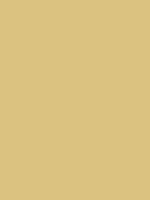#dcc280 Color Information
In a RGB color space, hex #dcc280 is composed of 86.3% red, 76.1% green and 50.2% blue. Whereas in a CMYK color space, it is composed of 0% cyan, 11.8% magenta, 41.8% yellow and 13.7% black. It has a hue angle of 43 degrees, a saturation of 56.8% and a lightness of 68.2%. #dcc280 color hex could be obtained by blending #ffffff with #b98501. Closest websafe color is: #cccc99.
-
- R 86
- G 76
- B 50
-
- C 0
- M 12
- Y 42
- K 14
● #dcc280 color description : Very soft orange.
#dcc280 Color Conversion
The hexadecimal color #dcc280 has RGB values of R:220, G:194, B:128 and CMYK values of C:0, M:0.12, Y:0.42, K:0.14. Its decimal value is 14467712.
| Hex triplet | dcc280 | #dcc280 |
|---|---|---|
| RGB Decimal | 220, 194, 128 | rgb(220,194,128) |
| RGB Percent | 86.3, 76.1, 50.2 | rgb(86.3%,76.1%,50.2%) |
| CMYK | 0, 12, 42, 14 | |
| HSL | 43°, 56.8, 68.2 | hsl(43,56.8%,68.2%) |
| HSV (or HSB) | 43°, 41.8, 86.3 | |
| Web Safe | cccc99 | #cccc99 |
| CIE-LAB | 79.248, 0.223, 36.539 |
|---|---|
| XYZ | 52.703, 55.359, 28.33 |
| xyY | 0.386, 0.406, 55.359 |
| CIE-LCH | 79.248, 36.54, 89.65 |
| CIE-LUV | 79.248, 20.525, 47.723 |
| Hunter-Lab | 74.404, -3.768, 29.507 |
| Binary | 11011100, 11000010, 10000000 |
Color Schemes with #dcc280
Alternatives to #dcc280
Below, you can see some colors close to #dcc280. Having a set of related colors can be useful if you need an inspirational alternative to your original color choice.
#dcc280 Preview
This text has a font color of #dcc280.
<span style="color:#dcc280;">Text here</span>This paragraph has a background color of #dcc280.
<p style="background-color:#dcc280;">Content here</p>This element has a border color of #dcc280.
<div style="border:1px solid #dcc280;">Content here</div>.text {color:#dcc280;}.background {background-color:#dcc280;}.border {border:1px solid #dcc280;}Shades and Tints of #dcc280
A shade is achieved by adding black to any pure hue, while a tint is created by mixing white to any pure color. In this example, #0b0903 is the darkest color, while #fefdfb is the lightest one.
-
#0b0903
#0b0903rgb(11,9,3) -
#1b1507
#1b1507rgb(27,21,7) -
#2a220c
#2a220crgb(42,34,12) -
#3a2e10
#3a2e10rgb(58,46,16) -
#493a14
#493a14rgb(73,58,20) -
#584618
#584618rgb(88,70,24) -
#68521d
#68521drgb(104,82,29) -
#775f21
#775f21rgb(119,95,33) -
#866b25
#866b25rgb(134,107,37) -
#967729
#967729rgb(150,119,41) -
#a5832e
#a5832ergb(165,131,46) -
#b59032
#b59032rgb(181,144,50) -
#c49c36
#c49c36rgb(196,156,54)
-
#cba442
#cba442rgb(203,164,66) -
#cfac52
#cfac52rgb(207,172,82) -
#d4b361
#d4b361rgb(212,179,97) -
#d8bb71
#d8bb71rgb(216,187,113) -
#dcc280
#dcc280rgb(220,194,128) -
#e0c98f
#e0c98frgb(224,201,143) -
#e4d19f
#e4d19frgb(228,209,159) -
#e9d8ae
#e9d8aergb(233,216,174) -
#ede0be
#ede0bergb(237,224,190) -
#f1e7cd
#f1e7cdrgb(241,231,205) -
#f5eedc
#f5eedcrgb(245,238,220) -
#faf6ec
#faf6ecrgb(250,246,236) -
#fefdfb
#fefdfbrgb(254,253,251)
Tones of #dcc280
A tone is produced by adding gray to any pure hue. In this case, #b0afac is the less saturated color, while #fbd061 is the most saturated one.
-
#b0afac
#b0afacrgb(176,175,172) -
#b7b2a5
#b7b2a5rgb(183,178,165) -
#bdb49f
#bdb49frgb(189,180,159) -
#c3b799
#c3b799rgb(195,183,153) -
#c9ba93
#c9ba93rgb(201,186,147) -
#d0bd8c
#d0bd8crgb(208,189,140) -
#d6bf86
#d6bf86rgb(214,191,134) -
#dcc280
#dcc280rgb(220,194,128) -
#e2c57a
#e2c57argb(226,197,122) -
#e8c774
#e8c774rgb(232,199,116) -
#efca6d
#efca6drgb(239,202,109) -
#f5cd67
#f5cd67rgb(245,205,103) -
#fbd061
#fbd061rgb(251,208,97)
Color Blindness Simulator
Below, you can see how #dcc280 is perceived by people affected by a color vision deficiency. This can be useful if you need to ensure your color combinations are accessible to color-blind users.
